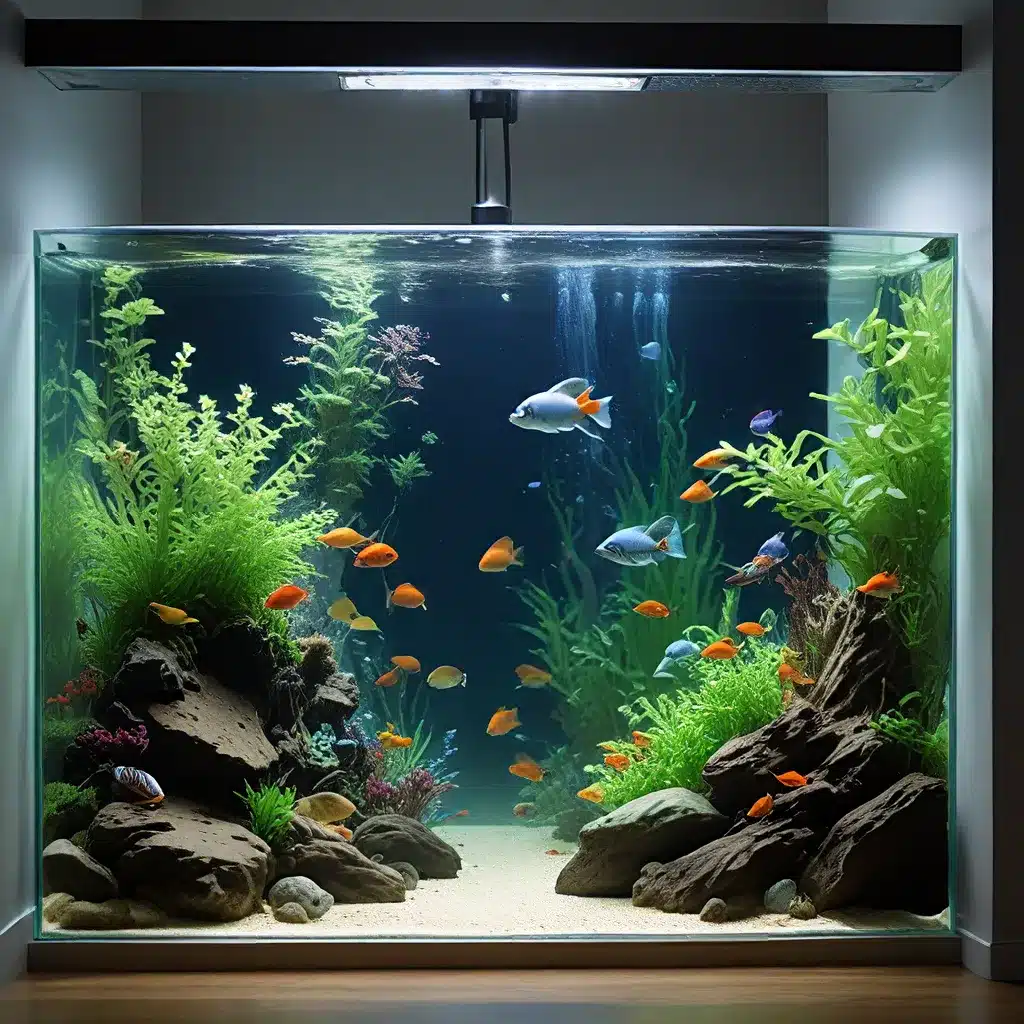
Embracing the Dynamics of Seasonal Transitions
One of the most captivating aspects of the natural world is the way certain aquatic habitats transform over the course of the year. In regions like the Amazon basin, the landscape shifts dramatically as the rainy season arrives, submerging once-dry forests and grasslands to create vibrant, biologically rich wetland environments. This dynamic interplay between terrestrial and aquatic realms has long fascinated aquarium enthusiasts, leading to the emergence of the “urban igapo” concept – a method of replicating these seasonal transitions within the confines of a home aquarium.
The urban igapo approach involves setting up an aquarium that mimics the natural cycle of inundation, starting with a dry, terrestrial setup that is gradually flooded to simulate the arrival of the rainy season. This allows aquarists to explore the nuances of these transitional habitats, where the interplay between land and water fosters the development of unique ecosystems teeming with diverse life.
Embracing Ecological Processes
At the heart of the urban igapo concept lies a deep appreciation for the ecological processes that drive the formation and function of these remarkable aquatic environments. Allochthonous input, the introduction of materials from the surrounding terrestrial landscape, plays a crucial role in shaping the character of flooded forests and grasslands. As the waters rise, they carry with them a wealth of botanical matter, from fallen leaves and branches to decomposing seed pods and other organic detritus.
This influx of botanical materials kickstarts a cascade of ecological events. Biofilms and fungal growth rapidly colonize the submerged surfaces, establishing the foundation for a diverse microbial community. As these materials gradually break down, they release a bounty of dissolved organic compounds, including tannins and humic acids, which lend the water its characteristic blackwater appearance and influence the overall water chemistry.
Fostering Functional Aesthetics
The urban igapo approach goes beyond merely replicating the appearance of these natural habitats; it aims to capture their underlying functional aesthetics. By embracing the dynamic processes that shape these environments, aquarists can create aquariums that not only look captivating but also mimic the complex interplay of biotic and abiotic factors that define these unique ecosystems.
Maintaining ecological continuity is a key aspect of this approach, as aquarists seek to preserve the well-established substrate layers and associated life forms when transitioning from one aquarium iteration to the next. This allows for the perpetuation of the biological foundations that support the overall health and stability of the system, rather than starting from scratch with each new aquascape.
Harnessing the Power of Decomposition
At the heart of the urban igapo concept is the acknowledgment that decomposition is not a nuisance to be eliminated, but rather a fundamental process that drives the function and development of these aquatic ecosystems. Leaf litter, driftwood, and other botanical materials serve as substrates for the proliferation of beneficial microorganisms, which in turn provide a steady supply of nutrients and supplemental food sources for the resident fish and invertebrate populations.
By embracing the role of detritus and the associated biofilms and fungal growth, aquarists can create aquariums that closely mimic the natural dynamics of flooded forests and grasslands. This shift in mindset, from viewing decomposition as a problem to be solved to recognizing it as an essential ecological process, is a key element in the successful implementation of the urban igapo concept.
Mastering the Mental Shifts
Adopting the urban igapo approach requires a significant mental shift in the way aquarists approach the management and aesthetics of their aquatic habitats. Rather than striving for the pristine, sterile look that has long been the hallmark of the hobby, adherents of this method embrace the natural, ever-changing appearance of these systems, where biofilms, fungal growth, and accumulated botanical materials are celebrated as integral components of a thriving ecosystem.
Aquarists must also be willing to exercise patience and observation, allowing the aquarium to evolve at its own pace rather than attempting to force a specific aesthetic or water chemistry profile. By ceding control to the natural processes at work, aquarists can foster the development of robust, self-sustaining aquarium communities that closely mimic their wild counterparts.
Exploring the Possibilities
The urban igapo concept opens up a world of possibilities for aquarists seeking to push the boundaries of their hobby. From replicating the diverse habitats of the Amazon basin to experimenting with the unique ecosystems of other regions, this approach offers a unique opportunity to engage with the natural world in a highly immersive and interactive manner.
Whether you’re drawn to the vibrant, tannin-stained waters of the Southeast Asian peat swamps, the rugged, rock-strewn streams of Africa, or the meandering, leaf-litter-laden tributaries of the Amazon, the urban igapo method provides a adaptable framework for recreating these captivating environments within the confines of your own home. By embracing the dynamic processes that shape these natural systems, aquarists can cultivate aquariums that not only astound with their visual appeal but also captivate with their functional authenticity.
So, why not take the plunge and embark on your own urban igapo journey? By exploring the wonders of the natural world and harnessing the power of decomposition, you can transform your aquarium into a thriving, ever-evolving ecosystem that celebrates the beauty and complexity of life beneath the surface.

